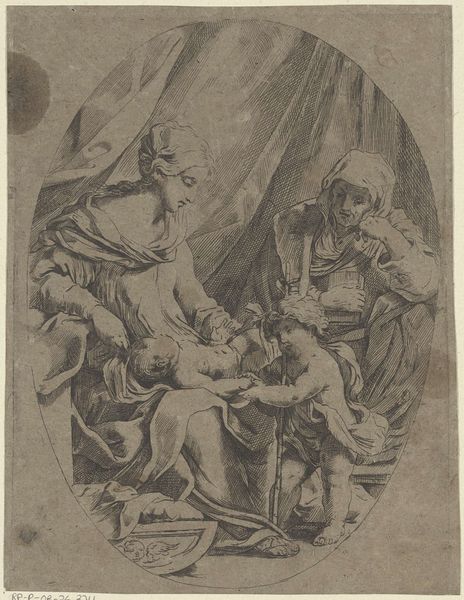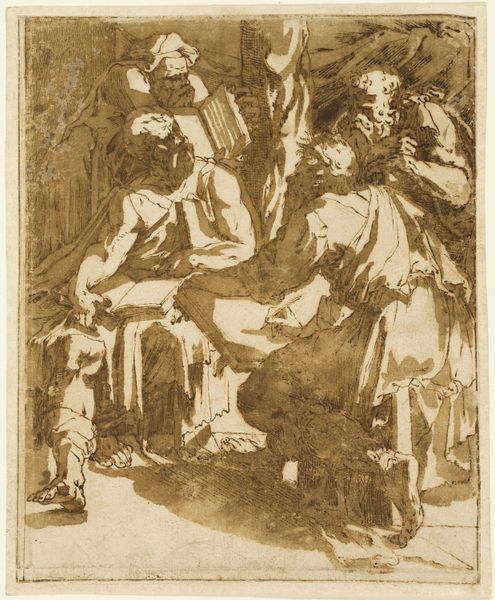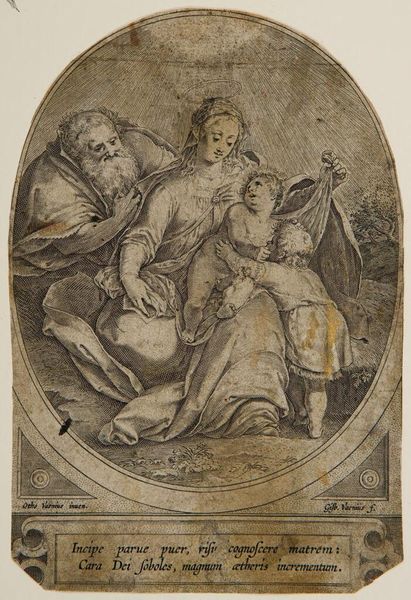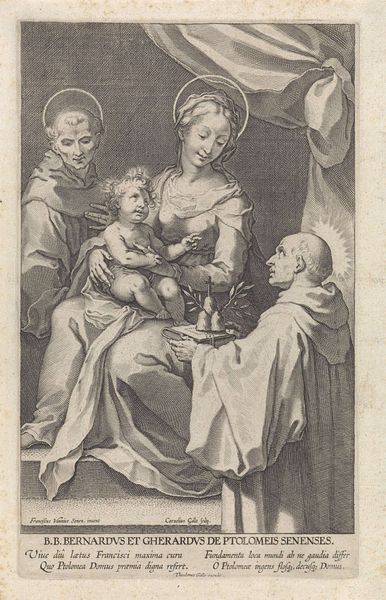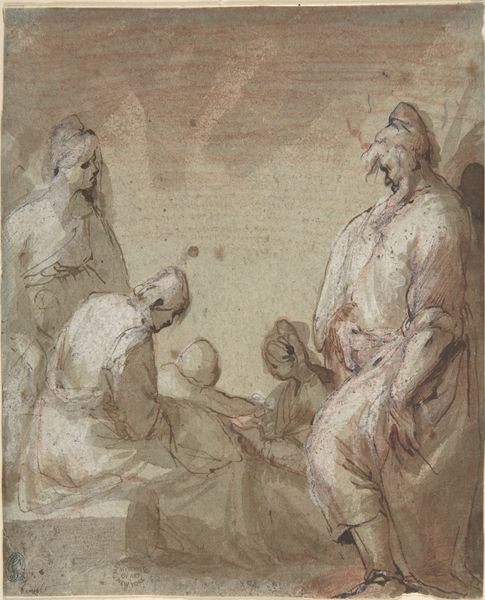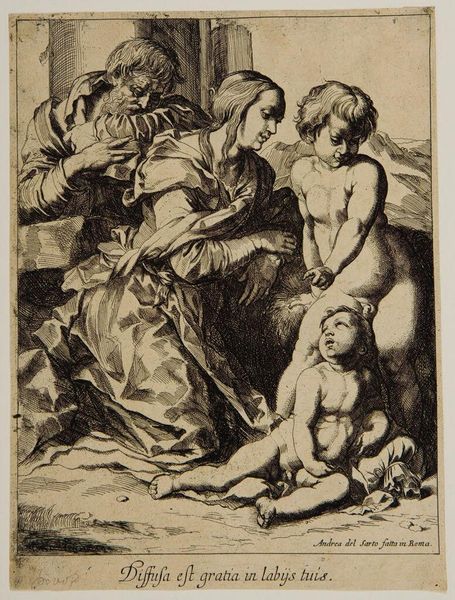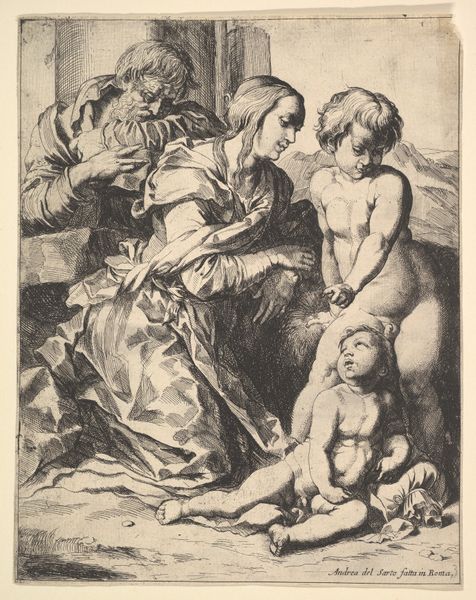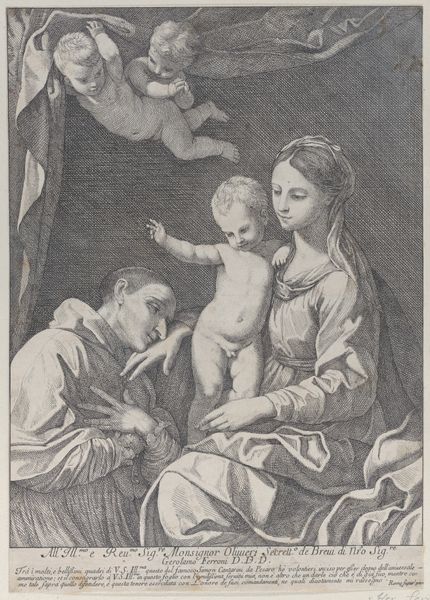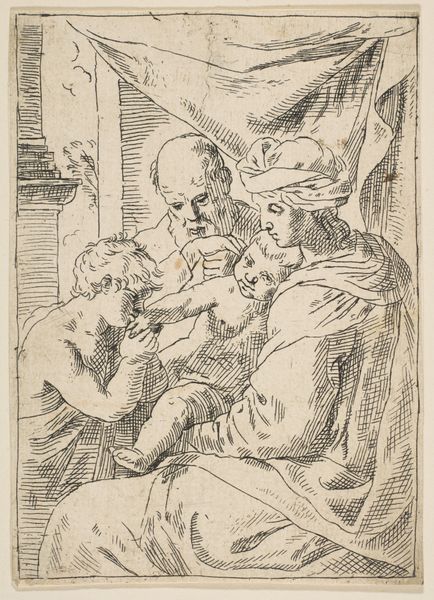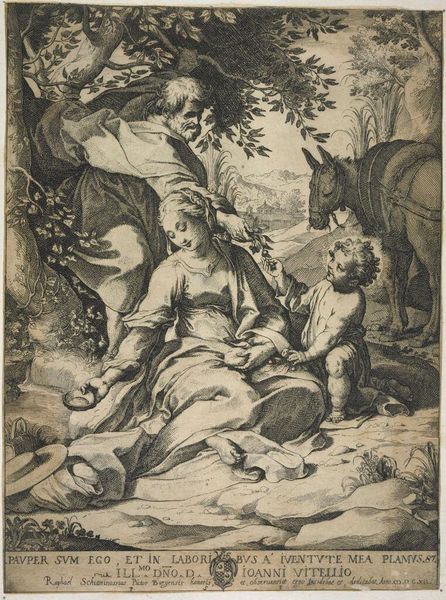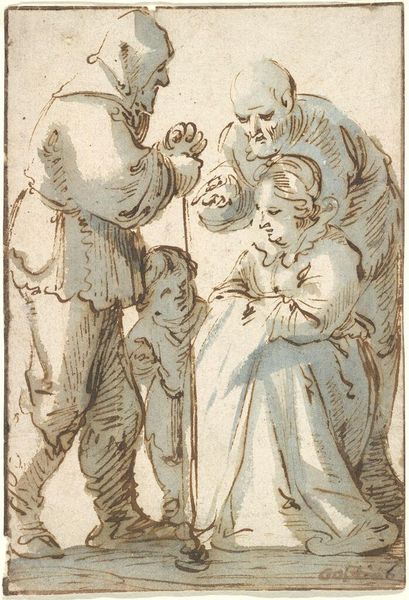
drawing, ink
#
portrait
#
drawing
#
narrative-art
#
charcoal drawing
#
figuration
#
11_renaissance
#
ink
#
history-painting
#
italian-renaissance
Dimensions: 152 mm (height) x 107 mm (width) (bladmaal)
Curator: Let’s turn our attention to this striking drawing, "The Marriage of St. Catherine of Alexandria" attributed to Andrea Boscoli, created sometime between 1560 and 1606. It's currently housed here at the SMK. The work seems to be executed in ink and charcoal. What’s your initial reaction to this piece? Editor: Immediately, I’m struck by its intimacy, despite depicting what could be seen as a public religious ceremony. The monochromatic tones lend a feeling of looking into a private moment, almost as though we, as viewers, are intruding on a sacred, but hushed scene. The close arrangement between the Virgin, child, and Saint suggests shared power or status too, maybe a silent resistance. Curator: Indeed. Boscoli was working within a fascinating moment in the late Renaissance when the dominant styles of painting were under pressure. Here, we see how he adopts the narrative structure that's often found in religious painting. St. Catherine kneels before the Virgin and Child, who places a ring on her finger, symbolizing her mystical marriage to Christ. The Church played a very significant role for the artist. Editor: Yes, I also see how the arrangement centralizes the baby Christ—there is a certain violence to the institution presented. This work reminds me that Renaissance art rarely feels distant or removed. We're implicated in these moments. What are your thoughts on how the composition of the figures shapes meaning in this work? Curator: The arrangement of the figures in a close-knit triangular formation is quintessential Renaissance composition. It brings the narrative closer to the viewer. St. Catherine is presented as the devoted supplicant while there’s some debate about her story. Some scholars have proposed it was entirely invented. But consider how this moment is made timeless by virtue of being set within the Christian canon. Editor: That's a key point. By embedding the marriage into that tradition, Boscoli elevates the status and gives visual form to Catherine’s narrative and spiritual authority, challenging established religious and social norms, but staying grounded within that structure. It underscores that period’s complexity when artists navigated how art was read, distributed, and, in some instances, deemed heretical. It gives much food for thought about the artist's own cultural context. Curator: A beautiful way to connect the artwork with broader perspectives on social practices of that time.
Comments
No comments
Be the first to comment and join the conversation on the ultimate creative platform.
